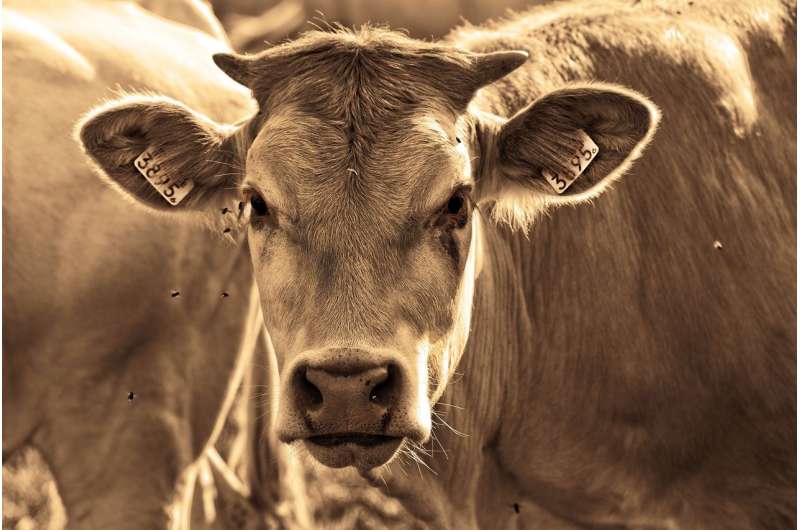Difference in microbiota between organic and conventional dairy farms

Bacteria and fungi on organic dairy farms are significantly different from those on conventional farms. That was discovered by postdoc researcher Sofia Gomes and her supervisors Nadia Soudzilovskaia and Peter van Bodegom in collaboration with the Louis Bolk Institute and Naturalis Biodiversity Center. Greater insight into microbial life on farms contributes to better production.
Optimal balance
When making dairy products such as cheese and yogurt, bacteria and fungi are indispensable. They determine the taste, structure and appearance of the end product. The specific composition of the fungal and bacterial community, also known as the microbiome, explains why each cheese has its own, signature flavor. But the microbiome also plays an important role, for example, in the soil of the farms.
However, these microbes can also cause disease and spoilage. Researcher Nadia Soudzilovskaia from the Center for Environmental Sciences: "All the different microbiological communities on such a farm—in the soil, the cow feed, the cow's bodies and ultimately milk—are important. They are all part of the cycle and each contributes to the production of dairy products in a specific, distinct way." Obtaining insight on farm's microbiomes is therefore important to optimize production of milk products.
Sand or peat, organic or conventional
The scientists wanted to test whether each dairy farm has a specific bacterial and fungal community which is present in all parts of the cycle. To this end, they examined the microbial communities on twenty dairy farms. They took samples from the soil under the grassland, the grass silage that was fed, the freshly collected manure from the dairy cows and the tank milk. The researchers looked at conventional and organic farms located on two different soil types: sand and peat.
Microbial community over the whole cycle
Results show that the composition of the bacterial and fungal community as a whole was specific to each part of the cycle (soil, grass silage, manure and milk) and showed virtually no overlap. Specific bacteria and fungi did occur in all parts of the cycle. In the silage, the researchers found significant differences between both sandy and peat soils and between conventional and organic farms. In milk and manure, significant differences in the bacterial and fungal composition between conventional and organic farms were found. The differences seem to be largely related to differences in cow rations (proportion of grass and reinforced feed) and the use of antibiotics, but this has yet to be further investigated follow-up research.
Soudzilovskaia: "Our work demonstrates that the microbiome of dairy farms is shaped by the differences between organic and conventional agricultural practices. With future research, we should examine how this links to animal health and food quality. This way, we could contribute to conscious policy regulations towards more sustainable agriculture."
More information: Sofia I. F. Gomes et al. Microbiota in Dung and Milk Differ Between Organic and Conventional Dairy Farms, Frontiers in Microbiology (2020). DOI: 10.3389/fmicb.2020.01746
Provided by Leiden University

















